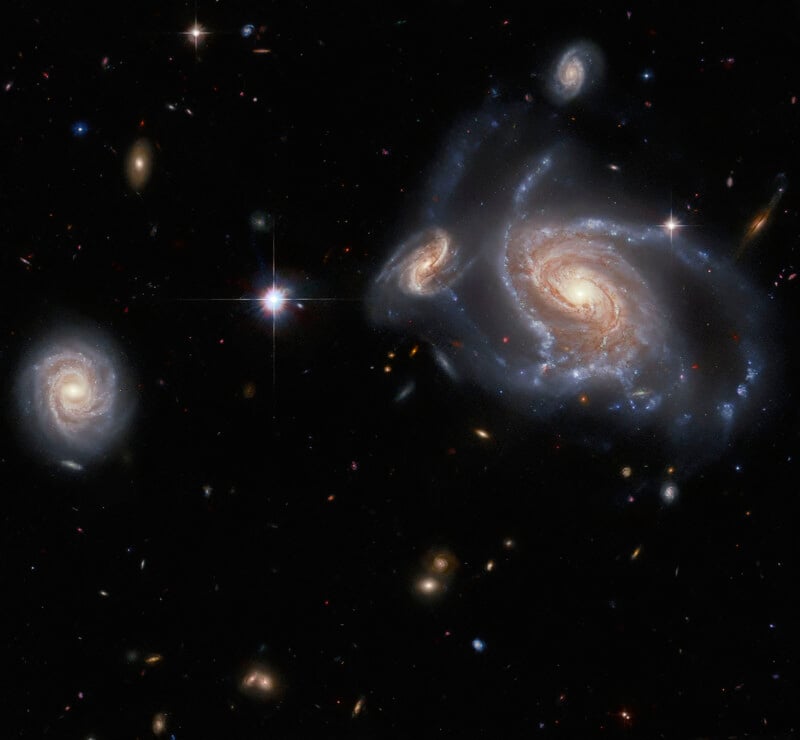Hubble’s Latest Shows How It Can Be Hard to Interpret Photos of Space

Acknowledgement: L. Shatz
Hubble continues to generate some some outstanding visuals of space and its latest is no exception. However, as much as this photo looks like it portrays a densely packed region of galaxies, reality is not quite so straightforward.
Shared by NASA today and published by the European Space Agency (ESA) late last month, this new photo captured by the Hubble Space Telescope features a dense region of what appear to be overlapping — or at least touching — galaxies. The largest spiral galaxy in the image is called NGC 1356 while the two smaller galaxies (at least smaller via the perspective of Hubble) are called LEDA 467699 (which appears above it) and LEDA 95415 (which appears almost overlapping it on the left) respectively. On the far left of the image is another spiral galaxy called IC 1947.
The repeated notes of “appears” is important, because it illustrates a challenging point for astronomers: is a galaxy actually close to another or is it just Hubble’s perspective that makes it appear like it is?
“A quick glance at this image would likely lead you to think that NGC 1356, LEDA 467699, and LEDA 95415 were all close companions, while IC 1947 was more remote. However, we have to remember that two-dimensional images such as this one only give an indication of angular separation: that is, how objects are spread across the sphere of the night sky. What they cannot represent is the distance objects are from Earth,” NASA and the ESA explain.
So the two galaxies that appear to be overlapping — NGC 1356 and LEDA 95415 — aren’t actually as close as they look. NGC 1356 is 550 million light-years from Earth while LEDA 467699 is roughly 840 million light-years away. That means that there is almost 300 million light-years separating them and is nowhere near as close NGC 1356 as it appears to be. As a kicker, LEDA 95415 is actually larger than NGC 1356.
On the other side of the coin, IC 1947 — the galaxy on the far left — is about 500 million light-years from Earth, meaning the angular distance between it and NGC 1356 is less than 400,000 light-years, making them far closer to each other than the image makes them seem and much, much closer than LEDA 95415 is from NGC 1356.